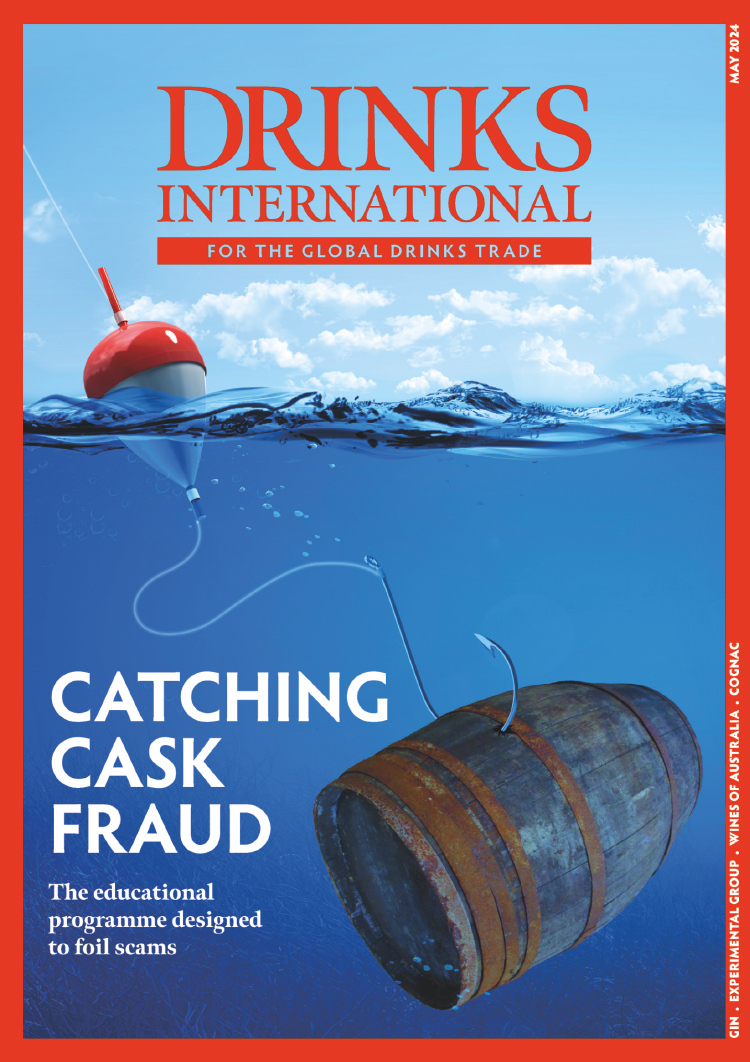Another one of those low key informal briefings this time revolving around the new Johnnie Walker expression: John Walker Private Collection 2014. As has become customary, held in London’s Soho, officiated over by Diageo’s head of whisky outreach, Nick Morgan and in the hot seat a jet and train-lagged master distiller, Jim Beveridge.
Beveridge has arrived in London from Hong Kong via Scotland and the overnight sleeper. He kicks off with the word “grain” and then remembers: it is Thursday and it must be London. We start with the smoke element that goes into the new inaugural John Walker Private Collection which is already available in DFS travel retail outlets in Asia and is due a UK unveiling at the end of June.
Before that Morgan tells the chosen few, trade press and bloggers: “No (distillery) names and no numbers (age statements).” These are de-luxe, super or uber premium blends we are ruminating over. Beveridge looks on anxiously.
We are told that this, the first in a series which is expected to run annually until 2020, had its genesis in the Walker Directors’ Blend. So this seriously limited edition, 8,888 bottles (whose lucky number is that?) is a commercialisation of what came out of the Directors’ Bend’s formulations.
Morgan, very much on mission, says this is the top of the Walker pyramid but it can only be sustained and developed by the base which is of course mainstream Johnnie Walker Red and Black Label.
With whisky writers, blogger, geeks and anoraks spending so much of their waking hours discussing the intricacies and excellence of single malt whisky, Diageo, and Morgan in particular, wants to redress the balance and highlight what goes into blends – the science, the expertise and possibly even the art. Alchemy, the sum of its parts, is becoming a much over used word but some certainly would apply it here.
So alchemist Jim Beveridge takes us through three of the 29 components that make up Private Collection 2014. We start with a smoky component which comes from vattings of a single island (not Islay, although there is some in the blend) malt. The liquid (no names, no dates, no pack drill) is aged in ‘active’ (another fairly new adjective) casks but are then married in older casks which impart little wood. Although there is smoke, it is light and delicate. With water, floral notes come to the fore.
The second offering comes from Diageo’s “Calculus trial/experiment”, says Beveridge. Sounds ominous. This was an exploration of the effect of wood on ageing whisky to provide a “matrix of whiskies”. Sadly some were just blended away after the test was concluded. Fortunately Beveridge and his phalanx of blenders still have plenty to play with. So number two comprises highland malts, vatted in active American casks re-racked back into the same casks. Talk about make work for yourself…This whisky is dark, sweet with some marmalade, burnt orange notes.
Number 3: Grain (no names….). This is light, aromatic, sweet and estery. Vatted from several grain whiskies, it was placed into refill casks and then ex-bourbon casks.
As we all know whisky buffs are very sniffy about grain. If it isn’t malted barley, it isn’t worth opening. Well, this is another subtle Diageo campaign: the rehabilitation of grain whisky, a recent manifestation of which has been the introduction of Haig Club (the subject of another sort of off the record briefing), a light grain whisky, promoted by no less than David Beckham with a view to enticing younger drinkers to scotch whisky. We wish Diageo and Haig all the best in that difficult mission.
Anyway Beveridge warms to the subject of the role of grain whisky in a blend. “Grain dissolves the shell, like eating a sweet with a sweet centre. The Calculus cask is not very accessible (quite astringent actually) but you add grain and it opens it up.”
All of the samples are 47% abv and the final blend is 46.8% - there’s that 8 again. The final blend is, needless to say, excellent with pronounced smoke but rounded and floral. No rough edges as you would expect from a blend that is going to cost £500 a bottle.
Another fascinating insight into the art of blending as performed by Jim Beveridge and his team. Asked about the 2015 edition, he replies: “It is being worked on as we speak.” He is on the 4.30pm (16.30) train back to Scotland.


